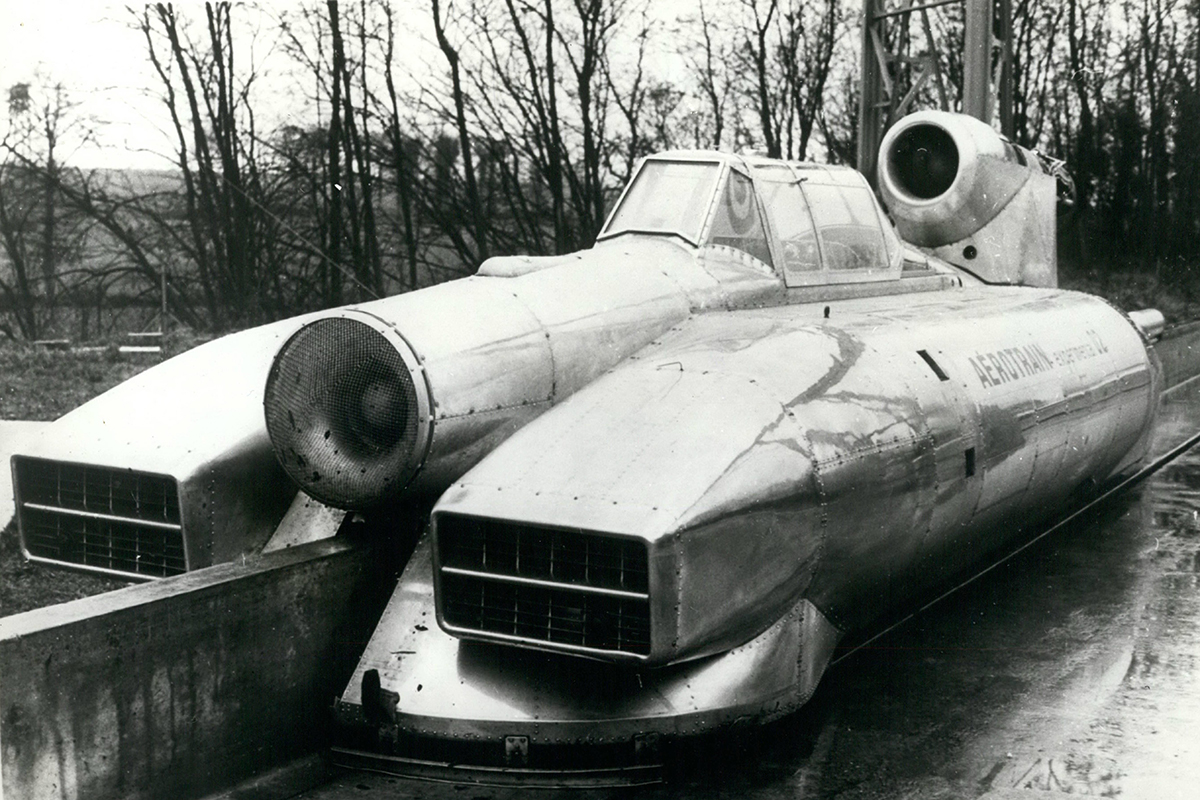7 crazy transport systems that didn’t go the distance
Beach Pneumatic Transit
The main metro in the US was the brainchild of creator and distributer Alfred Beach, and it was truly an impact. Burrowing for the Beach Pneumatic Transit started underneath New York in 1869. By the next year, the main toll paying travelers were being heaved in comfort along a 95-meter-long show line running underneath Broadway. The carriage was pushed by an enormous blower, named the Western Tornado, and was pulled back by suction when the blower was tossed into turn around.
In the initial two weeks, more than 11,000 New Yorkers rode the pneumatic travel. Somewhere in the range of 400,000 tickets were sold in the single year it was operational. Shoreline had intended to expand the line by 8 kilometers, to Central Park, however experienced difficulty getting consent. He at long last prevailing in 1873, by which time open and monetary help had depleted away. In any case, Beach's vision had a pragmatic inheritance in the New York pneumatic tube mail framework, which kept running until 1953.
Aeroatain
All the solace and speed of an attractive levitation prepare, yet without the specialized multifaceted nature and cost – that was the point of Aérotrain, a hovertrain created in France from 1965. Five models were assembled. This a la mode Aérotrain 02 motor conveyed a team of two and was fueled by turbojets. A later form, the I-80 HV, built up the world speed record for air pad vehicles ashore when it achieved 430.4 kilometers for every hour in March 1974. American organization Rohr Industries was impressed to the point that it authorized a portion of the innovation in the expectations of influencing one of its to possess.
On the off chance that Aérotrain had such a great amount of taking the plunge, what turned out badly? To start with, there was the demise of its lead build Jean Bertin. Absence of subsidizing was another issue. What's more, the last nail in the box came when the French government chose to embrace the TGV for its fast rail organize. Aérotrain was surrendered in 1977. Rohr had retired its form two years sooner. In this way, regardless of all the guarantee, the innovation never went standard.
Transit elevated bus
China's "straddling transport" is the most recent in a long and wonderful line of fizzled mass transport. Considered in 2000, and street tried a year ago, the Transit Elevated Bus arrived at the finish of the line this July in the midst of charges of money related shenanigans. As anyone might expect, this peculiar model pulled in impressive consideration when it made its first trip in Qinhuangdao, Hebei Province. China seriously needs green transport arrangements, and a tremendous, electric fueled, congested driving conditions skipping transport has evident interest. There was even discuss connecting four carriages to make a uber prepare equipped for conveying 1600 travelers.
Sadly, subsidizing wasn't the main obstruction. The transport would most likely have expected to revive at each station. Furthermore, with a leeway of only 2.1 meters, it would do harm to an extensive auto, not to mention a truck. Rails would should be fitted; extensions, lampposts and street signs moved. With an anticipated cost of $4.5 million for each carriage, you could purchase 11 standard electric transports at a similar cost. What's more, with respect to cornering – don't specify it.
Ithacus

It appeared like a smart thought in 1966 when the cool war was hot. To lessen the requirement for abroad US armed force bases, why not fabricate an intercontinental rocket fit for conveying a brigade of 1200 officers? Ithacus Senior was imagined as a 6400-ton behemoth, standing 64 meters tall and fueled by eight hydrogen drop tanks. Aeroengineer Phillip Bono considered it to be a down to earth application for his orbital dispatch vehicle ROMBUS (Reusable Orbital Module, Booster, and Utility Shuttle). Its rocket-fueled vertical take-off and landing would give a fast strike ability to "rocket commandos". What could turn out badly?
All things considered, for a begin, flying Ithacus home would be unimaginable without a custom-constructed platform. A convoluted arrangement was thought up. It involved flying the rocket to put it plainly, low-fueled jumps to the drift, transporting it onto a freight boat and cruising it back to the US. The littler, atomic fueled Ithacus Junior, propelled from a plane carrying warship, postured considerably more calculated issues. Maybe obviously, neither influenced it past the attracting to board.
Gyro monorail
On 10 November 1909, Irish innovator Louis Brennan gave the principal open exhibition of his gyro monorail in the grounds of his home in Gillingham, Kent, UK. The track was intended to flaunt the cornering capacity of a vehicle adjusted by two vertical whirligigs mounted one next to the other and turning in inverse ways. In spite of the fact that he had documented his first monorail patent in 1903, Brennan was hurried into this revealing when German altruist August Scheri reported he would soon be flaunting his opponent gyro monorail at the Berlin Zoological Gardens.
Brennan's appropriate open presentation came the next year at the Japan-British Exhibition in London. There, a monorail auto conveying 50 individuals at once crossed a round track at more than 30 kilometers for every hour. Winston Churchill was among the travelers and communicated his energy. All things being equal, government financing for the wander soon went away and Brennan's monorail was surrendered. Only two vehicles had been manufactured. One was rejected, the other was repurposed as a recreation center sanctuary.
Moving sidewalk
The primary moving walkway was divulged at the Chicago World's Fair in 1890. Imagined by design Max Schmidt, it comprised of three concentric rings, the principal stationary, the second moving at 4 kilometers for each hour and the third at 8 km/h, enabling walkers to acclimate to the slower speed before moving to the speedier one. It demonstrated a gigantic accomplishment at resulting works in Berlin and Paris, where in 1900 the trottoir roulant (imagined) circumnavigated the reasonable in a 3-kilometer circle. Almost 7 million guests jumped on. A couple even brought collapsing seats.
Induced by this achievement, authorities in New York proposed a few prominent moving walkway plans for the city including one over Brooklyn Bridge and another running down Broadway. None appeared, maybe on the grounds that they were scuppered by set up transport suppliers. It would be 50 years before moving walkways began to show up in sprawling airplane terminals and railroad stations. In any case, these single-track transport lines are a pale shadow of the first thought. The present day moving walkway is not a vehicle framework in its own right, more a minor supplement to different structures.
Space elevator
It's been a smart thought for over a century. A space lift would be a shoddy other option to rockets for conveying load, and even people, into space. Nowadays, the fantasy machine appears as a link moored to Earth's surface and extending 35,000 kilometers, past geostationary circle. Gravity and divergent power would keep it rigid and lasers on the ground would shaft energy to "climbers" that would slither up the link with their heap. Sadly, some enormous issues still should be overcome before the principal space lift accomplishes lift-off.
For a begin, there are as of now no materials sufficiently solid to deal with the strain on the tie. Carbon nanotubes may work in the event that we could make them longer and purer. Second, gravitational pulls from the moon and sun, and weight from whirlwinds wind, would make the link shake. It would likely need thrusters to keep it in line and stop the lift colliding with satellites or space garbage. Additionally, as a climber rose, its movement would cause the Coriolis power to pull it and the link the other way to Earth's revolution. Settling that issue could require strangely moderate treks enduring almost a month, or the watchful movement of different climbers. Space lifts may at present turn into a reality, yet don't hold your breath.







Post a Comment